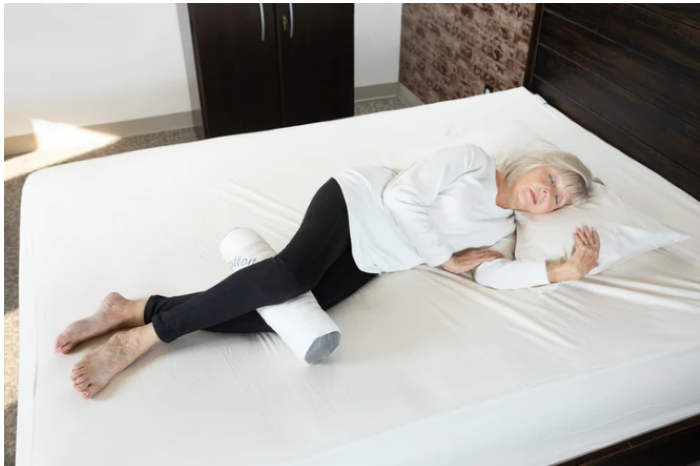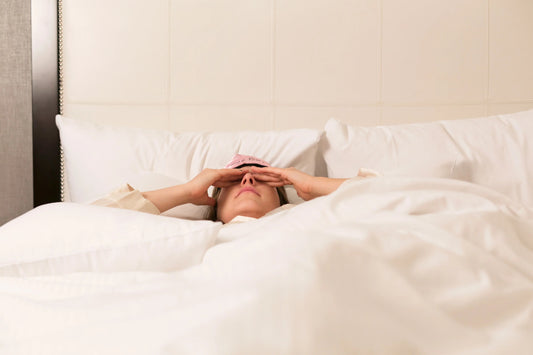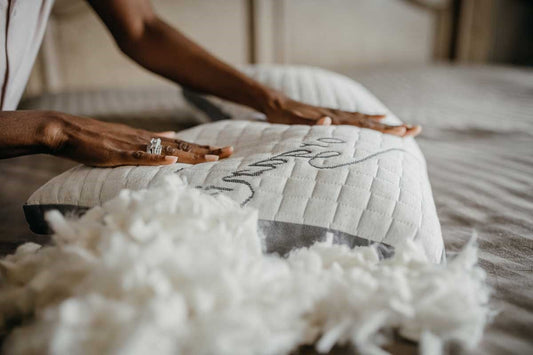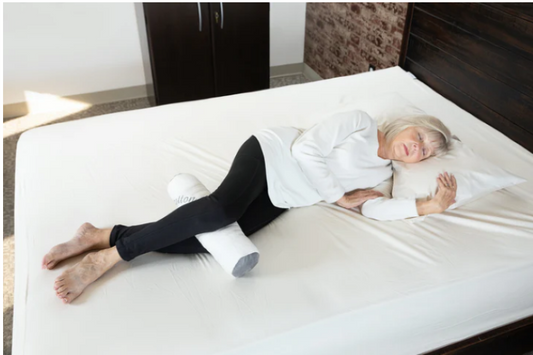Waking up to a tingling arm or a "pins and needles" sensation in your hand can be an uncomfortable and sometimes alarming experience. If you find yourself dealing with numbness in your limbs while sleeping, you're not alone! This is a common issue many people face, and understanding why it happens is the first step toward finding relief. Here, we’ll explore the reasons behind nighttime limb numbness and offer practical strategies to help prevent it.
Why Do Limbs Fall Asleep?
When a limb “falls asleep,” it usually means that its nerve signals have been temporarily interrupted. This interruption can happen when there’s pressure on nerves or blood vessels, causing a tingling or numb sensation known as paresthesia. Several factors can contribute to this:
- Pressure on Nerves or Blood Vessels: If you’re lying on your arm or hand for a prolonged period, it may compress the nerves or blood vessels, temporarily reducing circulation.
- Sleep Position: Some sleep positions are more likely to lead to compression, especially sleeping on your side or with your arms tucked under your head.
- Underlying Conditions: Certain medical conditions, like carpal tunnel syndrome, diabetes, or even vitamin deficiencies, can also make you more prone to numbness.
Simple Steps to Prevent Limb Numbness
The good news is that by making a few adjustments, you can often prevent your limbs from falling asleep and enjoy a more comfortable, restful night.
1. Adjust Your Sleeping Position
Your sleeping position plays a major role in whether you experience numbness. Here are some helpful tips for finding a supportive and circulation-friendly position:
- Avoid Sleeping on Your Arm: If you tend to sleep on your side, try to avoid lying directly on your arm. This can compress the nerves in your shoulder and cause your arm or hand to fall asleep.
- Try Sleeping on Your Back: Sleeping on your back can help distribute weight evenly, reducing pressure on your limbs. If you're a side sleeper, try using a pillow between your knees to alleviate pressure on your hips and improve circulation.
2. Use the Right Pillow
The pillow you use can significantly impact your circulation and comfort. When choosing a pillow, consider these factors:
- Elevate Your Arms: Use a body pillow or wedge pillow to help support your arms and prevent them from being tucked under your body.
- Opt for a Supportive Pillow: Choosing the right pillow can make a big difference. Look for one that supports your head and neck in alignment with your spine, reducing strain on your shoulders.
The pillow you choose can have a big impact on your sleep quality and circulation, particularly if you’re prone to limb numbness. The Sleep Artisan Side Sleeper Pillow is designed with side sleepers in mind and offers a range of features that can help alleviate pressure on your limbs and improve blood flow, helping to prevent numbness.
-
Customizable Fill for Perfect Support: The Sleep Artisan Side Sleeper Pillow is designed with an adjustable fill, allowing you to customize the loft to meet your exact needs. A properly adjusted pillow helps keep your head, neck, and spine in alignment, reducing strain on your shoulders. With less strain on your shoulder and neck, you’re less likely to experience compression that could lead to numbness in your arms or hands.
-
Ergonomic Shape for Better Arm Positioning: Unlike traditional pillows, the Sleep Artisan Side Sleeper Pillow has a curved design, specifically contoured to support side sleepers. This unique shape makes it easier to find a comfortable position for your arm that doesn’t involve tucking it under your head or body. With better arm positioning, you’ll reduce the pressure that often leads to nerve compression and numbness.
-
Natural and Breathable Materials: The pillow is made with eco-friendly materials, including organic cotton and natural latex, which not only provides a comfortable and supportive surface but also keeps you cool throughout the night. A cool, breathable surface improves circulation, as you’re less likely to experience the poor blood flow sometimes caused by overheating or sweating.
By supporting your head and neck alignment while providing a dedicated space for your arms, the Sleep Artisan Side Sleeper Pillow can help you achieve a more comfortable, restful night without the worry of waking up to numbness. It’s designed to encourage optimal sleep posture, minimizing the risk of pinched nerves or restricted blood flow.
3. Stretch Before Bedtime
Stretching can increase blood flow, relax tense muscles, and reduce pressure on your nerves. Focus on gentle stretches for your arms, shoulders, neck, and back. Incorporating a simple stretching routine before bed can also improve your overall flexibility and reduce tension, which may lessen the risk of numbness.
4. Keep a Comfortable Sleep Environment
Sometimes, limbs fall asleep due to poor circulation caused by cold temperatures. To avoid this:
- Keep Your Room Warm: A comfortable room temperature can improve circulation and help prevent numbness.
- Stay Hydrated: Proper hydration is key to good circulation. Drink enough water throughout the day, especially if you have a tendency toward circulatory issues.
5. Be Mindful of Underlying Conditions
If you frequently experience limb numbness, you may want to consider if an underlying condition could be contributing. Conditions like carpal tunnel syndrome or vitamin deficiencies (particularly in B vitamins) can make numbness more likely. If you suspect a medical condition may be involved, consult with a healthcare provider.
When to Seek Medical Advice
If limb numbness becomes a regular issue, or if it’s accompanied by pain, weakness, or other symptoms, it’s best to consult a healthcare professional. Persistent numbness can sometimes indicate nerve damage or other issues that may require treatment.
Conclusion
Waking up with limbs that have "fallen asleep" can be a frustrating experience, but with a few adjustments to your sleeping position, choice of pillow, and bedtime routine, you can greatly reduce this problem. By taking steps to support your body’s natural circulation and comfort, you’re setting yourself up for a more restful and uninterrupted night’s sleep.





